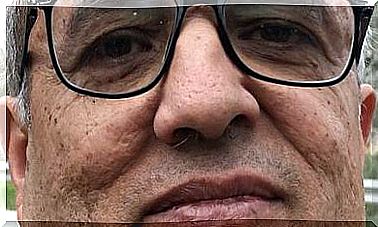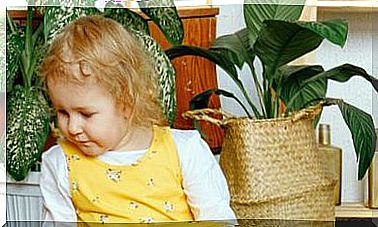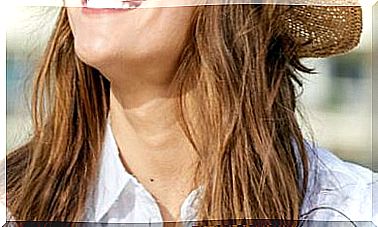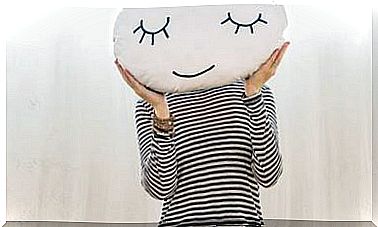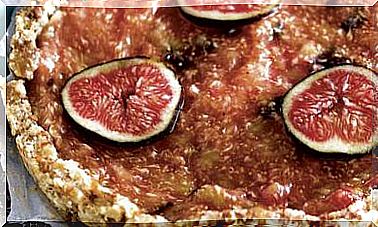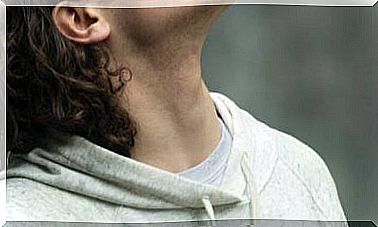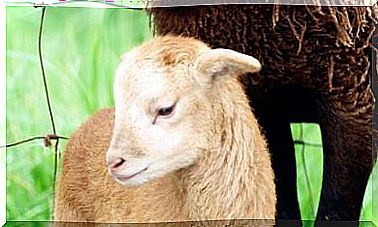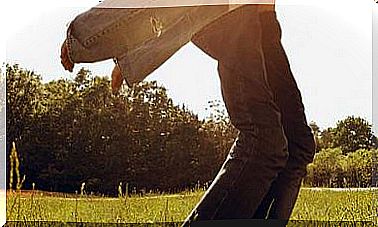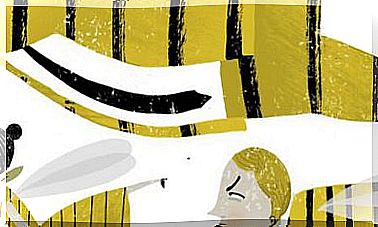“Healing With Plants Is Desirable And It Is Guaranteed”
He is an herbalist at El manantial de salud, which opened in 1950 and today has ten stores of its own. Although he studied chemistry, herbal medicine is his true passion.
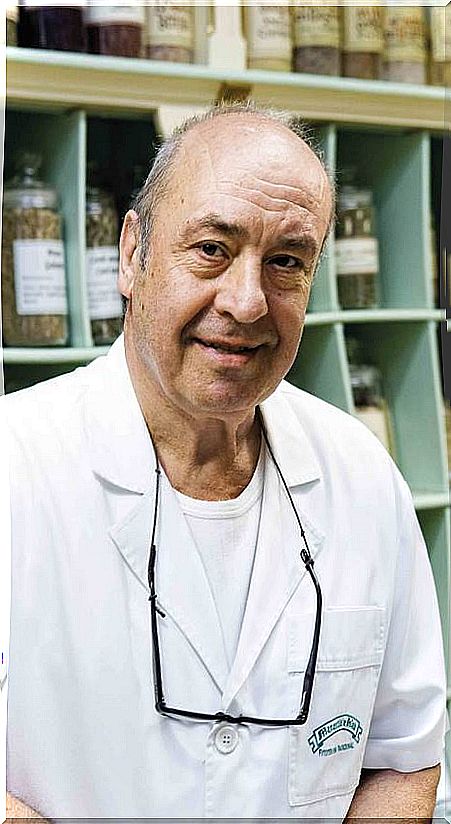
He likes the scents of the countryside from when he was a child : sage, rosemary, lavender, thyme. “It is the memory of my life”, says Llorenç Teixé.
He was born 65 years ago in Montpalau, a small town in the province of Lleida where his parents worked the land. Today he tries to make the cereal crops of the region give way to more prosperous medicinal plants and spends much of his free time in what was his family home, investigating the possibilities of natural cosmetics and encouraging the creation of an aromatic garden from the one to share his passion for the botanical and fragrant heritage of the Mediterranean.
He welcomes us in one of the group’s emblematic stores, the one on Mercaders street, near the Barcelona cathedral. A large and varied clientele is patiently waiting to buy medicinal plants, dietary supplements, organic food, bee products and natural cosmetics.
His wife, Trini Ferran, has been behind the counter since she was 16 years old, lavishing advice and smiles in the business that her father founded in 1950. To explain the trajectory of El Manantial de Salud, Teixé uses a metaphor: “We are like a tree : my father-in-law planted a seed, it germinated and it has grown. “
Now the family, with the couple’s four children involved in the company, has ten of its own stores and five franchises in various towns in Barcelona.
A lifetime of learning about plants
About to retire, he also plans to collect in a book the hundreds of herbal remedies that he has learned throughout his life at the helm of the El Manantial de Salud herbal shops. It is a knowledge, he assures, that is not found in any of the 1,500 volumes of his valuable library of plants.
– What is the most difficult thing about being a herbalist?
-You must like it. Today is beautiful because we are recognized and we are in fashion, but I highly value the herbalists of the 60s and 70s, who resisted like heroes at a time when the massive consumption of medicines was beginning and all our traditional knowledge was despised. It is a profession that excites me.
“I have a college degree, as a chemist, but I feel like a herbalist. It’s what I’m proud of.”
I came to study in Barcelona and here I met Trini, my wife, who worked in her family’s herbalist shop. I worked for many years in the pharmaceutical world but I discovered that what really made me happy, what I liked and what fulfilled me was the world of plants. I came from a rural environment where plants were used on a daily basis. I remember my grandmother and mother giving me plants at the first sign of a cold or flu. If you were cured, perfect. And only if they didn’t work, you went to the doctor.
– What fascinates you about your work?
–That every day I discover something new. I am very grateful, for example, that immigrants have revalued plants in their environment. Thanks to them we know plants from black Africa, South America or some islands. What I like about my profession is the answer. Many times the greatest satisfaction of the day is that a lady comes to thank me that the plants I gave her have been very good for her.
– How does it continue to form?
–Every day I learn. From books, from people, from experiences, from nature … I love the mountains. I am happy taking the renovated Dioscorides by Pío Font Quer and going to the Collserola mountain range to look for plants, to see them in their natural habitat.
– Are plants or therapeutic properties still being discovered?
– Medicinal plants are ancient and the rise of clinical medicine, very recent. Without plants, humanity would not exist, because for thousands of years they have served to heal us. Today we are very sure of what we do because science corroborates what our past intuited. We have many guarantees. So I am grateful to science. But the problem is that it is investigated only for economic interests.
Phytotherapy, pharmacy and conventional medicine: complementary tools
– Is not enough phytotherapy studied in the faculties?
-No. I have many friends and even many medical clients. And I understand perfectly that they say that they cannot prescribe plants because they do not know them. A few years ago a doctor and a nurse asked me to give a talk at their primary care center because they knew nothing about plants and they had many patients who were interested in them. I gave that talk and then another, and one of the doctors told me that that room had never been so full. Doctors have an interest but no possibilities.
“Phytotherapy is studied little and badly, and it should be a very important subject in the Faculties of Pharmacy and Medicine.”
–Does herbal medicine complement medical treatments?
–Of course, they are not contradictory. A doctor told me that we have many medicines for serious ailments but almost nothing for mild ones and that plants fit perfectly there. But the pharmaceutical lobby is not interested because they cannot be patented.
– Are plants useful only for minor ailments?
-They are useful for everything but have a limit already according to what type of disease they do not reach much less. The more toxic plants, the more active they are pharmacologically. 15 or 20 years ago, in this store you would have seen very toxic plants, like belladonna. Used well, they went very well. But later they began to be used as drugs, and the herbalists, without anyone telling us anything, we began to withdraw them.
Ephedra, a classic plant, is no longer found in herbal stores, and it was great for asthma, because it acts as an extraordinary bronchodilator. But the difference between its therapeutic dose and its dangerous dose is minimal. And when I put a tablespoon of ephedra in a glass of water, I don’t know exactly how much ephedrine is in there. I do not know if they have collected it in a rainfed area where the concentration of ephedrine in the plant is higher, or in an area where the plant carries more water and the ephedrine is more diluted. In a pill that is measured and guaranteed. In the plant, no. That is why we have stopped selling these more aggressive, more toxic but also more active plants, and we focus on plants for more preventive use.
– The law does not prohibit the sale of these plants?
-Not actually. But we self-censor ourselves. We seek the safety of people and we need regulated plants, with guarantees. Sometimes I serve people who are looking for plants that they have found on the Internet and that I do not know, about which there are not enough studies or guarantees and that, therefore, I prefer not to buy or sell. Herbalists are very prudent people. There are plants that are used in other countries despite their toxicity because they do not have pharmacological alternatives. I try to offer plants that I know, from our tradition.
– Who should prescribe plants?
-The doctors. I can advise plants that can go well for a certain problem, taken in a certain way, with some contraindications or not. But it is essential that the person go to the doctor and receive a diagnosis. We do not have to diagnose, we are only plant specialists.
– What is a herbalist based on to determine a master formula?
–In his knowledge of plants: what is their most important part, when they have to be collected, how they have to be treated, how they have to be taken. Success lies in a plant being suitable for a problem, but above all in being properly prepared.
Excellence from cultivation to infusion
-For instance?
–Thyme has a very volatile active principle, thymol, which is seen early in the morning under the leaves in the flowering season, in the form of droplets. If you boil thyme in water for five minutes, all that thymol evaporates. On the other hand, if it is put in cold water and when it starts to boil the heat is turned off, covered and left to rest for ten minutes, all the concentrated thymol is obtained. This infusion is one hundred times more effective than the first.
– Give other examples.
–If you want to make an infusion of mallow flower or marshmallow root to benefit from the anti-inflammatory effect of its mucilages, which are very good for the vocal cords, you have to boil them for 4 or 5 minutes, because it takes a lot for them to come off. The water should be a little gelatinous.
Horsetail is a great diuretic if boiled for a minute or two. But if you boil five, it also acts as a great remineralizer, so that no minerals are lost in the urine.
All of this is not in the books. It is the result of the experience of many years, of the interest in knowing, of what the clients tell me … Sometimes I get plants with a color that I do not like. And I return them. Because I know that when they dried that plant it rained or there was a lot of humidity and it rusted. A rusty plant has lost 50% of its properties.
– When are the plants to be collected?
– Flowering is the moment of maximum splendor of a plant in terms of active principles because it concentrates everything there to ensure its survival. But if the root is of interest, it must be harvested in October, when it is loaded with sugars and salts to spend the winter. If you want to take advantage of the essential oils in its leaves, the ideal time is before flowering.
–Does the Manantial de Salud grow its own plants?
–No, but we work with farmers who cultivate for us. My son Josep Maria is an expert in this field, he helps many people to grow plants. He lectures around the villages to try to change the crops. There are abandoned forage fields that are in danger of catching fire in the summer. Medicinal plants could be grown in these lands. We have an ideal climate for extraordinary plants to grow. The peasant who has exchanged the cultivation of cereals for medicinal plants has the whole crop sold by sowing it. Germany, other Central European countries and even Spain buy production from him because today the problem of the medicinal plant wholesaler is not to sell but to find raw material.
– And why doesn’t this business possibility arouse more interest?
– By the Administration. Many years ago an attempt was made to change traditional crops for medicinal plants. The European Union provided seeds at a good price and provided facilities, but we need technicians, trained people who know the plants. Help is also lacking to develop machinery to mechanize the process. We have combine harvesters for cereals, but medicinal plants are still harvested manually. And with labor the crops are not profitable.
– In other countries the situation is better?
– The largest producers are the countries of the former Soviet Union and the Maghreb. They have an agricultural tradition and their labor is cheap. I planted 4,000 lemon verbena plants but growing it cost me five times more than buying it in Morocco.
– How do you see the future of herbal medicine?
– I am very optimistic about consumption. Society moves through cycles and now there is a recovery of traditions, people see that they work. In winter, many mothers come to the store who leave the pediatrician with their child with a cold and look for an expectorant or mucus-thinning remedy. This ten years ago was unthinkable. It also happens with people looking for plants to control cholesterol.
– Will the Social Security finance the consumption of plants?
-I think so. If a person can treat the flu with an infusion of mallow, marshmallow, thyme… it is not necessary to take a stronger, more expensive medicine that leaves residues in the body. If that doesn’t help, try something more aggressive, but start with the simplest. Plants should be included in medicine, especially as preventives. Many doctors miss them, but are currently not accepted by their bosses, the system, or sometimes the patient himself.
“The success of a remedy lies in the fact that the plant is adequate but above all in that it is prepared correctly.”
– What is the difference between tea bags bought in a supermarket and dried plants that are bought in bulk?
–The difference is always in the quality. There are bags of extraordinary quality. And poor quality bulk plants. But, for example, with chamomile it happens that the most active part is its flower and it may be that the whole crushed plant is in the bag. We only sell the flower. Even if it is in a bag.
– Do medicinal plants have an expiration date?
–Yes, it is marked by its biological cycle, until a new harvest. In the case of the chamomile that we sell, it would be one year, because it does not contain preservatives or pesticides, nor is it irradiated. The plants are now subjected to pressure treatment (in a vacuum cabinet) to destroy any microorganisms. This makes it possible to extend the life of the plants without losing their properties. Over time the plant loses its aroma. But sometimes it wins in other ways. The bark of the frangula ( Rhamnus frangula ) just picked is very active, very irritating, very laxative. On the other hand, if it is stored in the warehouse, by the third year it has lost an important part of its active principles and it becomes a very mild, very effective and much less irritating laxative.
–Is the whole plant or a pill with its isolated active principle more effective?
–A herbalist prefers the whole plant. For many years of my life, when as a scientist I needed to be shown everything, I did not believe in the role of emotions. Now yes and a lot. The action of the active principles is the same but emotionally the ten minutes that are dedicated to preparing the infusion help to heal. And on the other hand, in terms of contraindications, an infusion of a plant is very different from the active principle extracted from that plant.
– Can you give an example?
– Kava-kava root, which ten years ago was widely sold as a relaxant, was banned because in Germany it caused cases of hepatitis. Later it was found that what had caused the hepatitis was an extract of kava-kava, kavalactones, which are responsible for this relaxing effect. But that plant has other principles that protect from the harmful action of kavalactones. If those people who got sick had taken the whole kava-kava root, they would never have had hepatitis. A plant has many active ingredients and they are there for a reason. It also occurs with St. John’s wort hypericins. I would like even the smallest active principle of a plant to be investigated, because the set of its principles is what gives it its properties. But at the moment only an active principle is being sought.
– What are the most common mistakes made when using medicinal plants?
– They are not used well in general. And also people do not have patience for the slow action of the plants, they interrupt the treatments. A very common misconception is that eucalyptus is believed to be good at vaporizing, when, if not combined with emollient plants such as mallow, marshmallow root, or plantain, it dries and clogs the nostrils. In winter, I advise mothers to cook all these plants in large pots and let the steam fill a room or bathroom for half an hour to an hour. This humidifies and creates a soothing and antiseptic environment to decongest and prevent children from catching colds.
– How do you make a good infusion?
-It depends. If its essential oils are sought (in the case of mint, lemon balm, sage), the plant is prepared as an infusion, pouring the water over it. On the other hand, if you want to extract the mucilages from plants such as mallow or marshmallow, you have to boil them for three to five minutes (decoction). Horsetail, to be remineralizing, has to boil for at least five minutes. An oak bark, which has astringent tannins, must boil between three and five minutes. Bitter plants (centaury, gentian …) by definition are not boiled, because overboiled they could even be toxic. We recommend marinating them overnight: a tablespoon in water, in a covered container. When you get up, you strain it and you drink it.
Knowing how to choose: effective herbal medicine
Why is so controversial stevia?
He has a great enemy: sugar multinationals. Now we are in a period of tolerance: it is accepted as a sweetening plant but it is not allowed to be marketed as a hypoglycemic plant, that is, due to its medicinal properties. The Manantial de Salud is sponsoring a project of an NGO of Catalan doctors in the Sahara that is checking how tea served with stevia instead of sugar is managing to dramatically lower the rate of diabetes.
– What plants are good to control cholesterol?
–There is a new plant that is now very good, chia (Salvia hispanica). It is a natural source of omega-3 and lowers cholesterol significantly. Along with amaranth it was a staple food of the Aztecs. Of the plants here, we recommend centaury, artichoke … those that regulate liver function. Also rosemary, fucus, dandelion. They help within a set of measures.
– What do you advise someone who sleeps badly?
– Let him find the cause of why he sleeps badly. If you are not interested in knowing it or cannot afford it, I recommend an infusion of equal parts European poppy, California poppy, passionflower and hops. Half a glass before dinner and another half before going to sleep. There are people who drink a little more if they wake up in the middle of the night.
– What is the difference between passionflower and valerian?
“A good herbalist will rarely give valerian to go to sleep.” It is a good tranquilizer during the day but gives a very restless sleep and the person wakes up tired. On the other hand, passionflower gives a more restful sleep. In general, relaxing plants should not be abused. When the dose is exceeded, they have a rebound effect: they excite. It happens with many plants: chamomile is digestive but if it is too concentrated it makes you vomit. And on the other hand, the relaxing plants act in phases: it is better to drink half a glass of infusion before or after dinner, and another half before going to sleep. And if someone has had a very difficult day, they can prepare half a liter of infusion and drink it from the time they get home until they go to sleep.
– Why is echinacea so popular?
-It is one of the most scientifically studied plants, which strengthens the defenses in a remarkable way. I consider it better as a preventive than as a curative. Associated with propolis, it is very effective in preventing colds.
– What is the difference between mint and lemon balm?
–Botanically they are very similar but lemon balm is a digestive relaxant, very useful when the nerves are in the stomach, and mint acts as a digestive stimulant, to avoid drowsiness after a meal, for example.
– And between the horsetail and the dandelion?
– Horsetail is a diuretic plant, very rich in minerals, especially silicon. Dandelion is a great cleanser, both for the liver and the kidney.
–When should you use mallow and when should you use coltsfoot?
-The mallow has a mucilage that is a great demulcent: it deflates inflamed walls. The colt is more expectorant, more antitussive. For a time it was prohibited because freshly collected and in very high doses it can become hepatotoxic. But once dry it loses all its toxicity. Of the two, I prefer mallow, which is an extraordinary plant.
“Is it your favorite plant?”
-I would be among the 25 that I would stay if they forced me to choose. Mallow is very smooth, very efficient. Its mucilage lubricates the intestine, without being laxative, it protects the irritated mucous membranes of the stomach and throat … I always have it at home and it grows in my garden.
